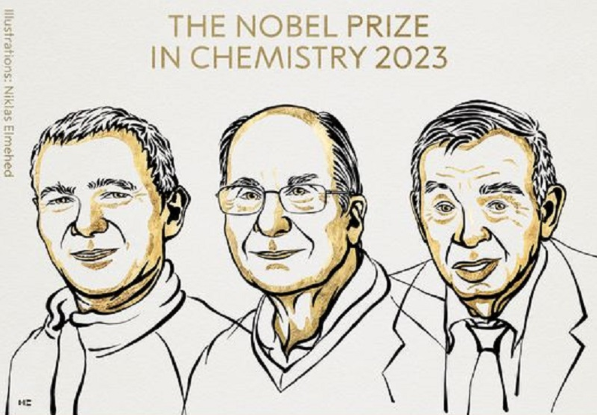
On this Wednesday, the Nobel Prize Committee bestowed the 2023 Nobel Prize in Chemistry upon three researchers currently residing in the United States. Manji Pawande from the Massachusetts Institute of Technology (MIT), Louis Bruce from Columbia University, and Alexey Ekimov, associated with Nano Crystals Technology, were recognized for their groundbreaking work on the “discovery and synthesis of quantum dots.” These scientists are actively engaged in nanoscale particle research within the United States.
Nanoscale particles and quantum dots find applications in LED lighting, television screens, and even play a crucial role in guiding surgeons during the intricate process of cancerous tissue removal.
Theoretical knowledge among physicists about the potential quantum effects dependent on size in nanoscale particles has existed for a considerable time. However, sculpting in nanoscale dimensions was considered nearly impossible during that period.
While only a few envisioned the practical application of this knowledge, Alexey Ekimov achieved a significant breakthrough in the early 1980s. He successfully induced size-dependent quantum effects in colored glass, with the color originating from nanoscale particles of copper chloride.
Ekimov’s work demonstrated how the size of particles influences the color of glass through quantum effects.
Several years later, Louis Bruce became the pioneer in proving size-dependent quantum effects in particles floating freely in a liquid.
In 1993, Manji Pawande revolutionized the chemical production of quantum dots, resulting in nearly perfect particles. This high-quality output was imperative for their effective utilization across various applications.
Today, quantum dots illuminate computer screens and TV displays through QLED technology. They also enhance the precision of light in certain LED lamps. Beyond this, biochemists and medical professionals leverage quantum dots to map biological tissues, providing significant benefits to humanity.
Researchers anticipate future contributions in areas such as flexible electronics, small sensors, thin solar cells, and encrypted quantum communications. Consequently, they have initiated exploration into the vast potential held by these minuscule particles.
Leave a Reply